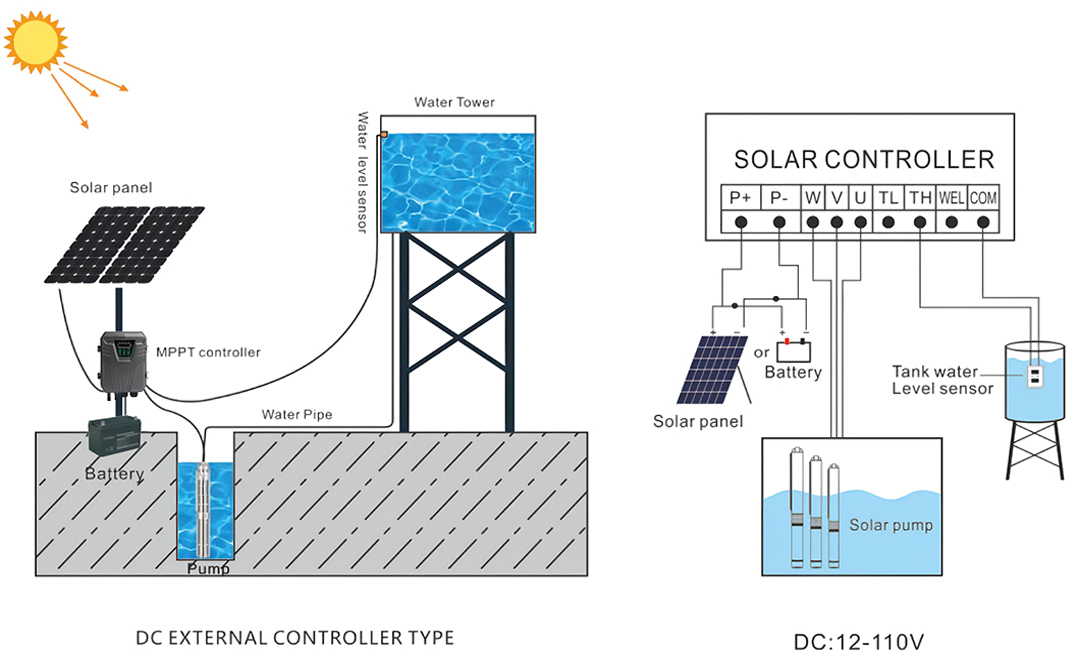Industry News
View All Products
en
In the quest for sustainable and efficient water pumping solutions, the debate between Water Filled Solar Pumps and traditional electric pumps has gained significant traction. As the world increasingly seeks eco-friendly alternatives, it's crucial to understand the benefits and limitations of each option to make an informed decision.
Environmental Impact
Water Filled Solar Pumps are powered by solar energy, making them a highly sustainable choice. They produce no harmful emissions and rely on renewable energy from the sun. In contrast, traditional electric pumps often depend on grid electricity, which may be generated from fossil fuels, contributing to carbon emissions. For environmentally conscious consumers, the Water Filled Solar Pump is a clear winner.
Cost Considerations
While the initial investment for a Water Filled Solar Pump may be higher due to the cost of solar panels and other components, the long-term savings are substantial. These pumps eliminate the need for electricity bills, as they harness free solar energy. Additionally, they require minimal maintenance, further reducing operational costs. Traditional electric pumps, on the other hand, come with ongoing expenses for electricity and more frequent maintenance.
Reliability
Water Filled Solar Pumps offer reliable water supply even during power outages, making them ideal for critical applications such as livestock watering or crop irrigation. Traditional electric pumps, however, are vulnerable to power failures, which can disrupt water supply. The reliability of Water Filled Solar Pumps is further enhanced by their ability to operate in various weather conditions, although their performance may be affected by prolonged cloudy periods.
Ease of Installation
One of the major advantages of Water Filled Solar Pumps is their ease of installation. Unlike traditional electric pumps, which often require professional installation and extensive electrical connections, Water Filled Solar Pumps can be set up by property owners without the need for an electrician. This makes them particularly suitable for remote or off-grid locations where access to professional services may be limited.
Longevity
Water Filled Solar Pumps typically have a longer lifespan than traditional pumps. With fewer moving parts and lower maintenance requirements, they are less prone to wear and tear. Additionally, solar panels have a lifespan of 25-30 years, making Water Filled Solar Pumps a long-term investment. Traditional electric pumps, however, may need more frequent repairs and replacements, increasing their total cost of ownership.

Customizability
Water Filled Solar Pumps come in various sizes and configurations, allowing them to be tailored to specific needs. They can be used for a wide range of applications, from domestic water supply to large-scale agricultural irrigation. Traditional electric pumps also offer a variety of options, but they may not be as flexible in terms of customization.
Suitability for Different Scenarios
The choice between Water Filled Solar Pumps and traditional electric pumps depends on several factors, including water needs, geographic location, and budget. Water Filled Solar Pumps are ideal for areas with abundant sunlight and low water consumption. They are also suitable for remote locations where grid connections are unreliable or expensive. Traditional electric pumps, however, may be more appropriate for high water demand scenarios or areas with limited sunlight.
The decision between Water Filled Solar Pumps and traditional electric pumps ultimately depends on individual needs and circumstances. For those who prioritize environmental sustainability, long-term cost savings, and reliability, Water Filled Solar Pumps are an choice. However, if your water requirements are high, or if you are located in an area with limited sunlight, a traditional electric pump may be more suitable. By carefully evaluating these factors, you can choose the water pumping solution that meets your needs.
